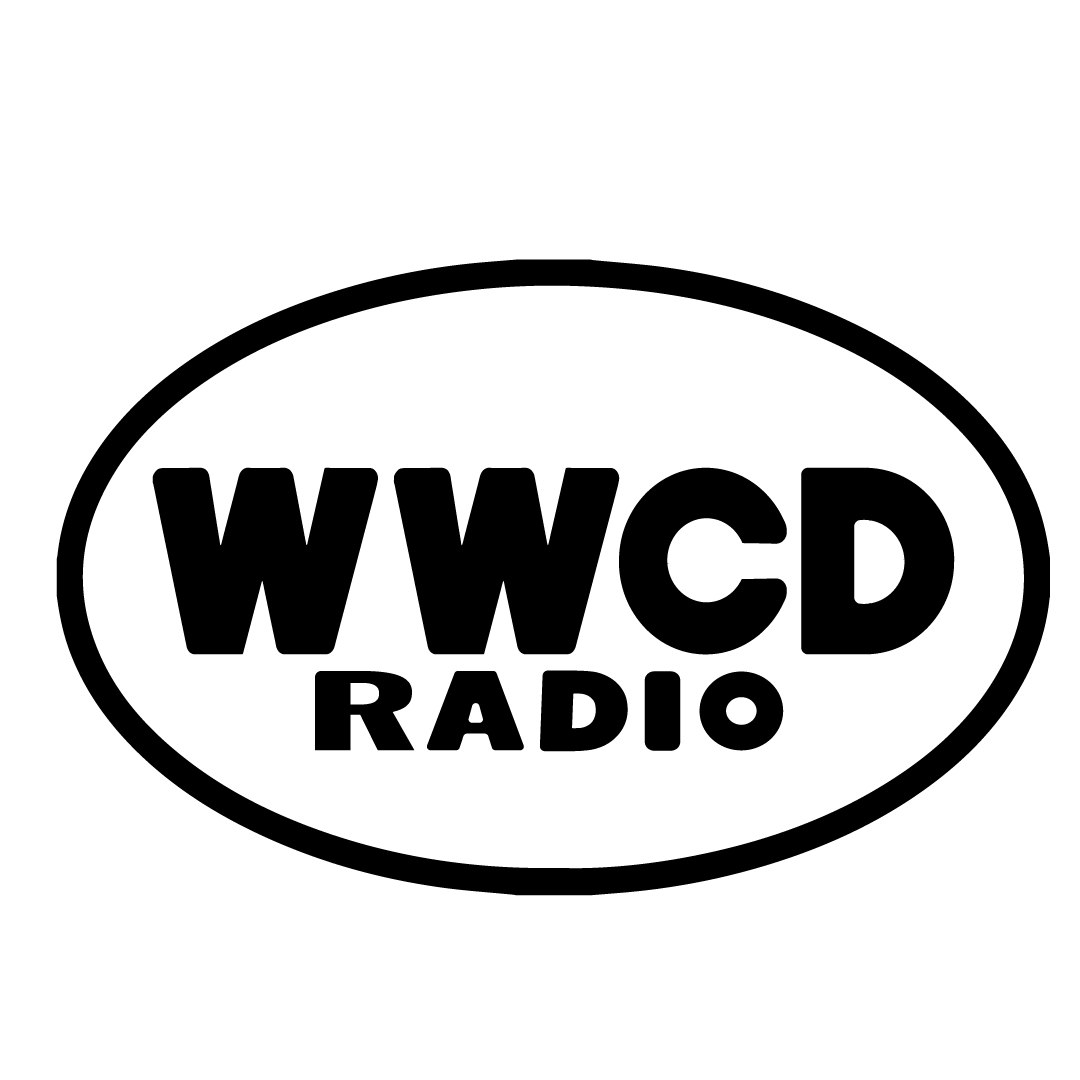Listeners:
Top listeners:
-
play_arrow
Fun Size Trending Topics September 23, 2021. His Name? St. Dangerous Of Course CD929

Editor’s note: My very first involvement in radio was when I was about fifteen or sixteen. My high school collaborated with our local community radio station to create a program in which a bunch of high-schoolers wrote, programmed, performed, and produced an hour-long radio show (it was called “The H-Zone.” Shout-out to my fellow former Zoners!). It wasn’t amateur hour either- we planned the show, we rated one another’s performances during segments, and we were even encouraged to create our own specialty pieces.
We each brainstormed ideas and talked them over with the station manager. My segment was called “Emma Hath a Song” because I really thought Shakespearean words were funny at the time (ask me about my “checketh thyself lest ye wrecketh thyself” shirt).
The format was pretty simple: a consistent intro started the segment, and I would then launch into the history of the song, fun facts about the inspiration, or trivia about the song’s legacy. I loved doing it and carried the series over to YouTube in college and then my personal blog afterward.
Anyway, the point is, this will be a similar feature.
For “Song History Saturday” we will take a song each week and break down some of the details about the writing, recording, and sometimes the legacy of the song. This week, we’re kicking it all the way back to what most people call “the first hit rock and roll song.”
On this day in 1954, the original version of Bill Haley and His Comets’ “Rock Around the Clock” was released.
Written by songwriters Max C. Freedman and James E. Myers (credited as Jimmy D. Knight), historical records indicate that the song was actually written in 1952. The original version of the song was reportedly arranged in a similar style to an instrumental, “The Syncopated Clock,” which is not a rock song by any standard.
The title “Rock Around the Clock” had been used before in a couple of instances, although the songs themselves were different. Indeed, as early as the 1940s, people had been writing blues songs about rocking around the clock- although it was not even slightly considered a genre. Rocking around the clock was an activity. Sting can tell you about it.
Oddly enough, the inspiration for the version of “Rock Around the Clock” that Bill Haley and His Comets recorded sounded a lot more like Hank Williams’ “Move It on Over” than any of the similarly-titled songs. “Move It on Over,” in turn, was inspired by a song by Delta blues musician and singer/songwriter Charley Patton, “Going to Move to Alabama.” Some people regard “Going to Move to Alabama” as the first rock and roll song, all the way back in 1929. Music is an ever-changing and shifting thing, always influenced by the past while trying to pave the way for the future…but I can’t help but feel that “Going to Move to Alabama” is every bit as much a rock song as many of the songs released 1955-1963 in the rock genre. Of course, not only did Patton’s music never take off, he died at around 43 and his death wasn’t even reported in the paper. It also might not shock you to know that there was a song released in 1927 called “Kansas City Blues” by Jim Jackson in which you can hear the roots of “Going to Move to Alabama.” It’s a big ol’ rabbit hole, folks.
Anyway, back to the 1950s. In 1953, Haley was reportedly offered “Rock Around the Clock” after the success of the Comets’ single “Crazy Man, Crazy.” The band began performing it live, but their producer Dave Miller refused to allow them to record it under the Essex label. Reportedly, Haley really believed in the song and continuously tried to get it recorded, only to have Miller rip up the sheet music.
So, the first recording of “Rock Around the Clock” was not by Bill Haley and His Comets. The song was first recorded by Sonny Dae and His Knights in March 1954. It was a regional success, but it was also still a different arrangement from the one we all know.
 Bill Haley and His Comets left Essex records in the spring of 1954 and signed with Decca instead. Their first recording session was April 12th, and “Rock Around the Clock” was almost delayed once again when The Comets encountered a sand bar on the route to the studio. Once the session started, (Billy Crystal’s uncle) Milt Gabler insisted as their producer that they start by recording “13 Women (And Only One Man in Town)” as their A-side. Nearly finished with their session time, the group was finally able to record a take of “Rock Around the Clock,” but Haley was drowned out by the band. A second take was hastily recorded with less instrumentation and the takes were spliced together for the single.
Bill Haley and His Comets left Essex records in the spring of 1954 and signed with Decca instead. Their first recording session was April 12th, and “Rock Around the Clock” was almost delayed once again when The Comets encountered a sand bar on the route to the studio. Once the session started, (Billy Crystal’s uncle) Milt Gabler insisted as their producer that they start by recording “13 Women (And Only One Man in Town)” as their A-side. Nearly finished with their session time, the group was finally able to record a take of “Rock Around the Clock,” but Haley was drowned out by the band. A second take was hastily recorded with less instrumentation and the takes were spliced together for the single.
The initial release of Bill Haley and His Comets’ “Rock Around the Clock” was not a huge success. It was issued as the B-side to “Thirteen Women” as Gabler had intended, and it did make the Cashbox charts. However, the real success didn’t come until 1955.
 1955 saw the release of The Blackboard Jungle, the film that jumpstarted the career of Sidney Poitier. During the making of the film, they strove to acquire songs that young people were actually listening to. Glenn Ford starred in the film, and took it upon himself to borrow a few records from his son’s collection, including “13 Women” backed, of course, with “Rock Around the Clock.” Exposure from Blackboard Jungle caused “Rock Around the Clock” to sell records much better than the single sold before. On July 9th, 1955, “Rock Around the Clock” became the first “rock” single to top the Billboard charts, where it stayed for eight weeks. It ended the year as the #2 Billboard single of 1955 (behind “Who Cares, People Do Not Remember the #1 Song of 1955 Nearly as Well”).
1955 saw the release of The Blackboard Jungle, the film that jumpstarted the career of Sidney Poitier. During the making of the film, they strove to acquire songs that young people were actually listening to. Glenn Ford starred in the film, and took it upon himself to borrow a few records from his son’s collection, including “13 Women” backed, of course, with “Rock Around the Clock.” Exposure from Blackboard Jungle caused “Rock Around the Clock” to sell records much better than the single sold before. On July 9th, 1955, “Rock Around the Clock” became the first “rock” single to top the Billboard charts, where it stayed for eight weeks. It ended the year as the #2 Billboard single of 1955 (behind “Who Cares, People Do Not Remember the #1 Song of 1955 Nearly as Well”).
In 1964, the band even recorded a sequel song called “Dance Around the Clock” so you may end up hearing about that on Two For Tuesday some week. Haley passed away in 1981 at the age of fifty-five. Only two years prior, he played “Rock Around the Clock” for Queen Elizabeth II at a royal command performance.
The legacy of “Rock Around the Clock” is tremendous. We could have conversations about it not being the first rock song (which actually isn’t the claim, it’s just the first #1 rock song), about how the genre was co-opted from people of color, about how the original meaning of “rocking” is nothing I’d want to do with Bill Haley or His Comets. But let’s just take a moment to appreciate what this song represented to so many young folks of the era. It’s hard to believe now, but it represented rebellion for many of them. It represented a new kind of youth culture being recognized by society as a whole. It meant the guitar sound was on its’ way in. It paved the way for innovators like Little Richard and Carl Perkins to be accepted into the mainstream. That doesn’t sound like a direct connection, but a lot of the late fifties/early sixties rock artists had their careers take off in 1955/1956. I don’t think that’s a coincidence. Because “Rock Around the Clock” was a palatable counterculture. It’s innocuous. It opened the door and let all of our real rock and roll friends in.
Editor’s note: Growing up, I always believed that rock music started in the very early ‘60s. I don’t know where I got that idea, but because of it, it still blows my mind to know how early on “rock” songs actually existed.
-Just Emma (JustEmma@CD929FM.com)
Written by: Emma Sedam
